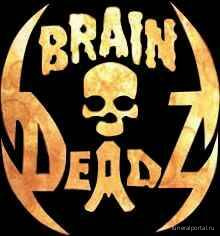She has always been intrigued by cemeteries. Local historian and author Karen Dustman would look at headstones and wonder “Who were these people? What were their lives like?” She was willing to deeply and thoroughly investigate to find out the answers.
Fortunately, that is Dustman’s idea of fun.
Her first book on the beautiful Fredericksburg cemetery in Alpine County let her discover the bittersweet tales behind the markers. She continues to be motivated on the quest to preserve the stories of those who came before us.
Genoa Cemetery is much larger, and in the heart of the first and oldest town in Nevada. Dustman had to find a way to break up the information into a more manageable size. She says, “If you stand at the entrance facing west, you’ll find four basic sections, divided by dirt roads running uphill (east-and-west). Book #1 covers the southernmost strip on your far left. Book #2 is the next section just to the right, and Book #3 is the third section on your right.”
Eventually, Book #4 will cover the final strip on the far right (north) side of the cemetery. Each book takes about a year to complete, so it is obviously a task requiring real dedication and a deep passion for her subject.
This was not a solitary task for Dustman. She reports that she had much help in compiling the whole series, including information and photos from the Douglas County Historical Society. The excellent documentary photos are by the extremely talented Alpine County photographer, Judy Wickwire. These make it easy for readers to clearly identify where they are on the walking tour.
Several local historians contributed information and research for the series, including Laurie Hickey. Life-long Valley resident and member of the Genoa Cemetery Association, Wally Adams provided invaluable assistance and kindly shared burial notations that his father had compiled. Dustman found these especially helpful in identifying unmarked graves.
Research for the book revealed information about the shift of burials from the “old” cemetery (which was located at the top of Nixon Street) to today’s Genoa Cemetery. Many of the graves were actually dug up and reburied at the “new” cemetery, with the moving process taking place gradually over more than a 20-year period.
“Not all the graves in the original cemetery were moved.” Dustman states, “Some were left behind deliberately, including desperado “Bad Man” Sam Brown, who still languishes in obscurity in an unmarked grave at the first burial ground!”
In the third section of the Genoa cemetery, Dustman was excited to find out details about the lives of the fascinating people who are entombed there. She discovered a Navy pilot who saw the first Japanese planes fly over during the 1941 attack on Pearl Harbor, a gangster who was said to have helped “Baby Face” Nelson dispose of a blood-soaked car, a world-renowned spice importer known as the “Pepper King,” and an anti-tax activist who had hoped to develop “Constitution City” in the seventies.
Other graves are of ranching families like the Uharts, and early Genoa pioneers like Frank Walker and T.P. Hawkins. Dustman says that “There are mysteries! What really killed Catherine Maxwell? She died in 1887 at just 52 years old, and while the coroner’s inquest concluded it was liver trouble and diabetes that did her in, Catherine confided to friends that her son had “kicked me and beat me all over the house” in an argument over money.”
Dustman also found reports of incredible tenacity. Clara Snelling Ray had been badly burned in a tragic fire as a child. She managed to survive facial deformities and the loss of fingers, being remembered by those who knew her as “one of the nicest people” they had ever met.
Harriet Walley is interred in this section. She not only took over management of Walley’s Hot Springs after her husband’s sudden death in 1875, but also managed to pay off every bit of the $18,000 debt he’d left behind, too.
The book includes the life stories of a dozen early settlers who Dustman believes are buried at Genoa Cemetery, but whose exact resting places cannot be pinpointed. These include Mary Gilman, who operated the old Gilman Hotel and early physician Dr. E.D. Black, who treated medical problems from typhoid to laudanum overdoses, even amputating a limb when needed.
Dustman discovered that some of the marble used in the monuments was actually quarried in the Pine Nut Mountains, while the granite bases came from the foot of Kingsbury Grade. These sculptures honoring the dead make Genoa Cemetery a peaceful place to wander. There is a military index at the back of the book. You can use this to identify the final resting places of veterans spanning from the time of the Civil War all the way to Vietnam.
Book No. 3 is hot off the press just in time for holiday giving. The series is available at Shelby’s Books in Minden, and at the Carson Valley Museum and Cultural Center Bookstore in Gardnerville. CVM&CC is participating in the Shop Small Event on Saturday.
By Lisa Gavon R-C Alpine Bureau
The Old Genoa Cemetery: A Walking Tour (Book 1)
https://www.clairitage.com/book/old-genoa-cemetery-walking-tour-1.html
Fredericksburg Cemetery: A Walking Tour
https://www.clairitage.com/book/fredericksburg-cemetery-walking-tour.html
The Old Genoa Cemetery: A Walking Tour (Book 2)
https://www.clairitage.com/book/the-old-genoa-cemetery-a-walking-tour-book-2/









